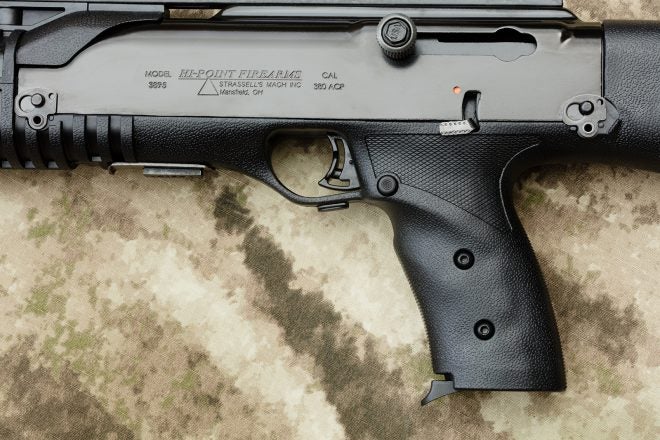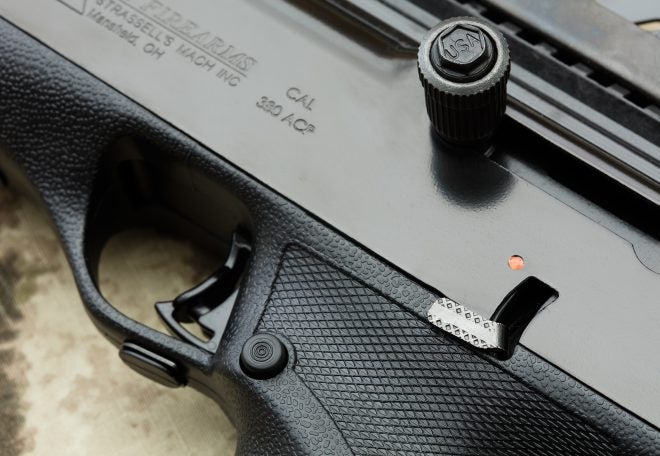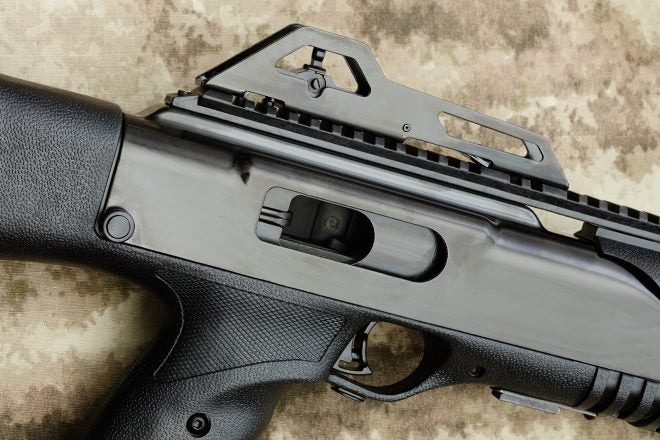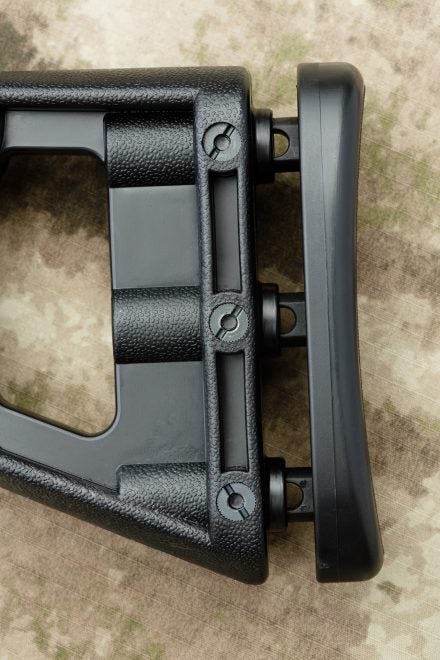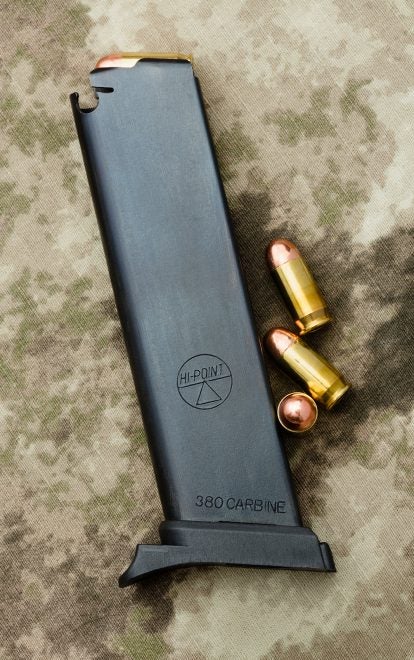Hi-Point 3895TS Carbine in 380ACP
Oleg Volk 05.16.16

Hi-Point carbines have long had a reputation of being cheap, accurate, and reliable. For that, people overlooked the visually ugly design and cheek-busting hump on the buttstock. I tried a 9mm variant a decade ago and moved on to better things. Recently, I heard about .380 version coming out and got curious about it. Who makes semi-auto .380 carbines? I couldn’t think of any in existence besides the newly available 3895TS. At $297 MSRP, it is also one of the cheapest semi-auto carbines on the market.
Before use, some assembly is required. Screw in the reciprocating charging handle, tighten it using the included multi-tool, and the carbine is ready to go. Sling swivels are also included and attaching them is obviously optional. This new gun is a typical Hi-Point blowback design of plastic and stamped metal. The safety lever arrests bolt movement as well.
The trigger is long and fairly heavy, though wide enough that the weight doesn’t actually become a problem. A single-stack magazine holds 10 rounds. The ghost ring rear sight is impressively precise, with click-less windage and elevation adjustment scale. The same multi-tool is used to adjust it. The only deficiency was the front sight finish, with shiny surfaces picking up glare at times. Top-mounted Picatinny rail permits installation of a red dot sight, but I wanted to test it with the stock irons. That’s most likely how this weapon would be used.
The bolt partly envelops the chamber, allowing for a fairly short action. Racking it is easy as 380ACP doesn’t require a strong recoil spring. The bolt will lock back on an empty magazine.The rifle weighs in at 7 pounds, so felt recoil is minimal and so is the report. While 380ACP is equally subsonic from pistol and rifle, the pressure at the muzzle of 16.5″ barrel is far less than with pistol.
The overall impression from firing this carbine is that of “concentration.” It feels very comfortable in hand. All surfaces touched by the hands are smooth, and the shoulder stock hump of the old design has been replaced with a more comfortable adjustable length (with tools) straight stock. It’s very easy to pay attention to marksmanship with a gun like this.
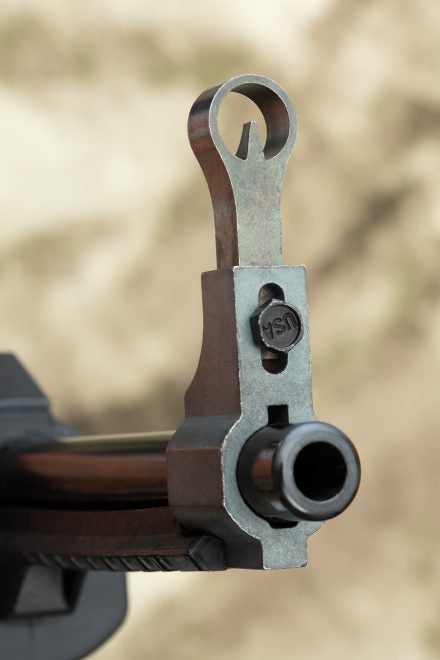
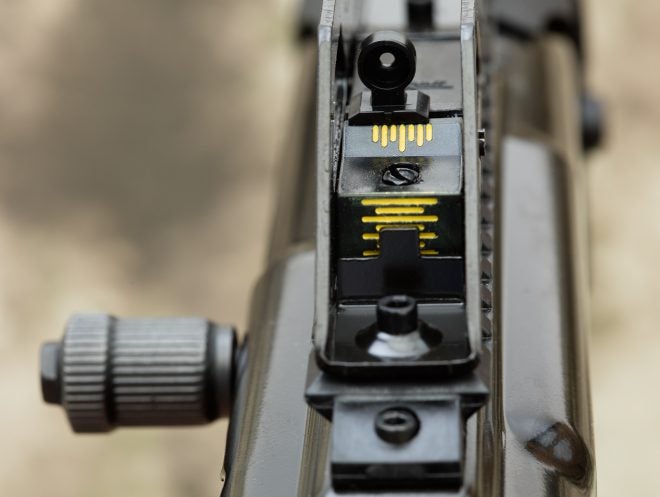
I strongly suspect that the barrel twist on the .380 is the same as on the 9mm models. Relatively fast twist would explain why 56gr and 75gr high velocity bullets did not group well, but Federal 95gr FMJ shot 2 inch 10-shot groups at 25 yards and HPR 100gr TMJ gave 1.6 inch 10-shot clusters with all holes touching. Those were fired at a cadence, perhaps a shot every second and a half. At ten yards standing, I can easily shoot the entire ten rounds into a one-inch hole.
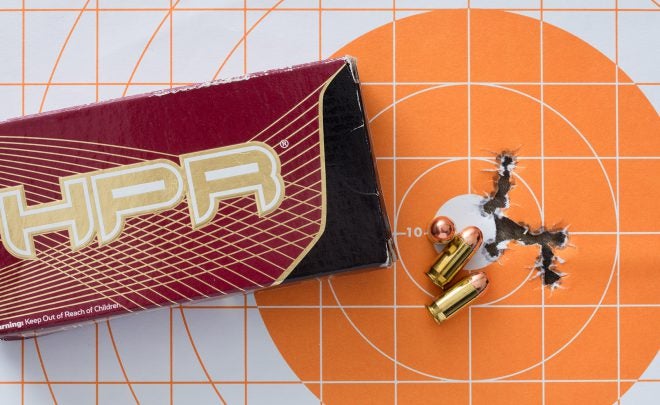
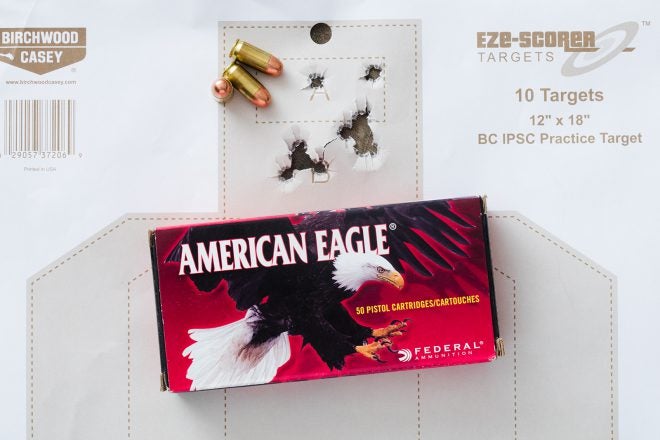
In the 120 rounds fired during my test, not one failed to cycle. I did notice that the second round from the top of the magazine would sometime shift forward once I chambered the first cartridge, keeping the magazine from being withdrawn from the magazine well for topping off. The bottom of the magazine also had some unpleasantly pointy edges.
Contrary to the higher numbers achieved by other testers, I observed only 1020fps with 95gr FMJ and an even 1000fps with 100gr TMJ. For accuracy, that’s the preferred load. For defense, I would recommend 95gr JHP. Various brands would work, but I’ve observed excellent performance by the HPR load. Looking at historic record, we can note that older .380 ammunition would gain considerably from longer barrels, while newer loads are more properly optimized for compact pistols and gain, at best 150fps and usually only 100fps from the carbine. The main advantage of the longer gun is in the reduction of noise and in the much improved accuracy. It’s also rather more fun to shoot than the harder-recoiling 9mm. While the noise levels can be kept low by running 147gr subsonics in the 9mm Luger variant, the recoil level would necessarily increase by a bit. For self-defense, 9×19 would be a better cartridge, but 380ACP might be preferred for ammunition commonality if the user already has a pistol in that caliber.
